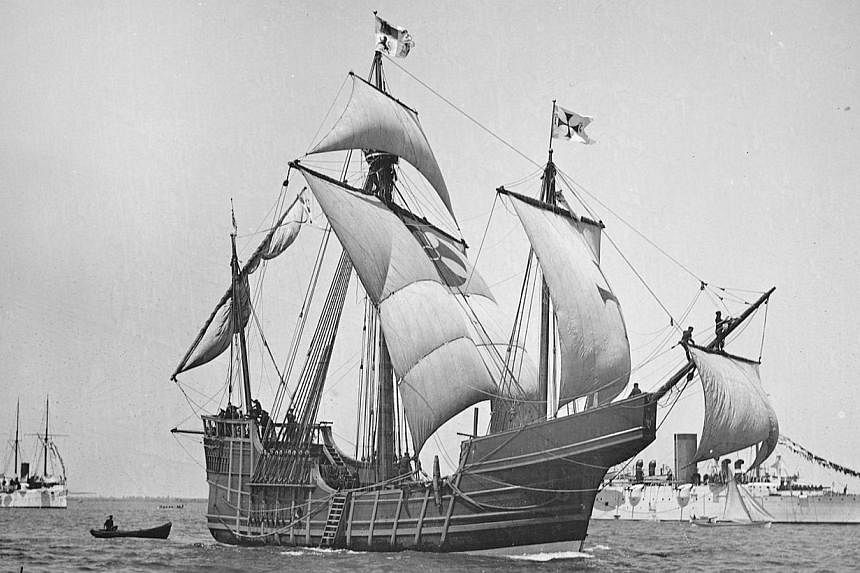NEW YORK (AFP) - The US marine archaeological researcher who believes he has found the famous flagship of Christopher Columbus said on Wednesday that salvaging it was now urgent to prevent looting.
"I think this is an emergency situation. I think the ship needs to be excavated as quickly as possible, conserved and displayed to the world," underwater explorer Barry Clifford told The Explorers Club, referring to the fabled Santa Maria.
The flagship from the explorer's first voyage to the Americas was found in the area where Columbus said the Santa Maria ran aground more than 500 years ago, Clifford said Tuesday.
The researcher said the expedition he led to find the wreck unearthed sufficient proof to establish its authenticity - 11 years after he first investigated it.
Clifford, 68, cited "overwhelming" proof that the ship was likely the Santa Maria.
"There is nobody watching the ship right now," he fretted, adding that "somebody knows where we are." "I'm ready to leave next week if I get the green light," he added, noting that discussions were under way with Haitian authorities.
Clifford said current evidence will bear out his assessment.
"I am confident that a full excavation of the wreck will yield the first-ever detailed marine archaeological evidence of Columbus's discovery of America," he said in his statement Tuesday.
Clifford is perhaps best known as the discoverer and excavator of the world's first fully verified pirate shipwreck, the Whydah, in 1984.
He and his team first investigated the wreck off Haiti in 2003 and brought up a cannon from the depths.
Clifford told CNN that archaeologists "misdiagnosed" the cannon at the time.
He said that two years ago, having done his own research into cannons used during Columbus's time, "I woke up in the middle of the night and said, 'Oh my God.'"
So this year, he returned to the wreck with a team of experts in tow and took careful measurements and photographs of the ship.

